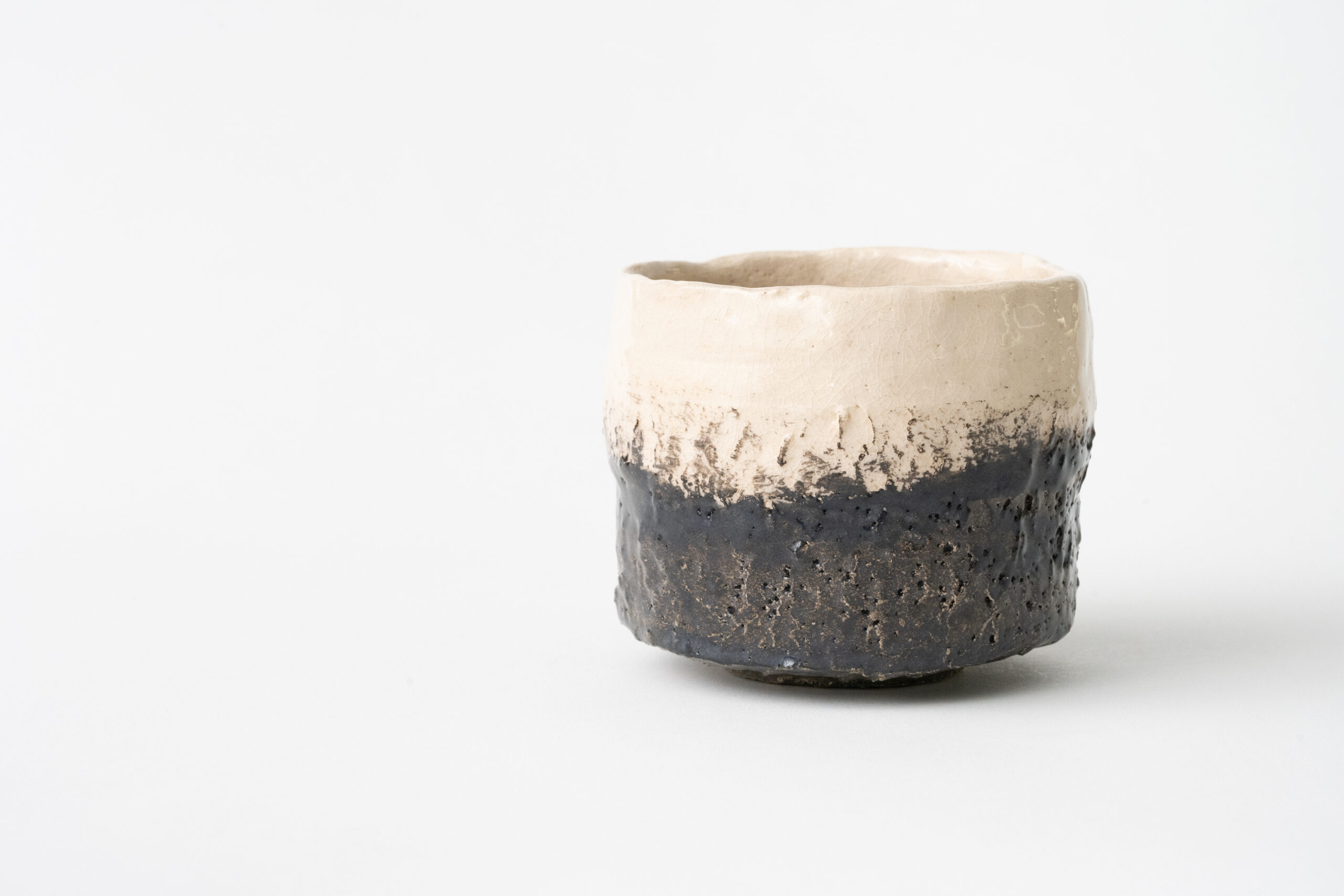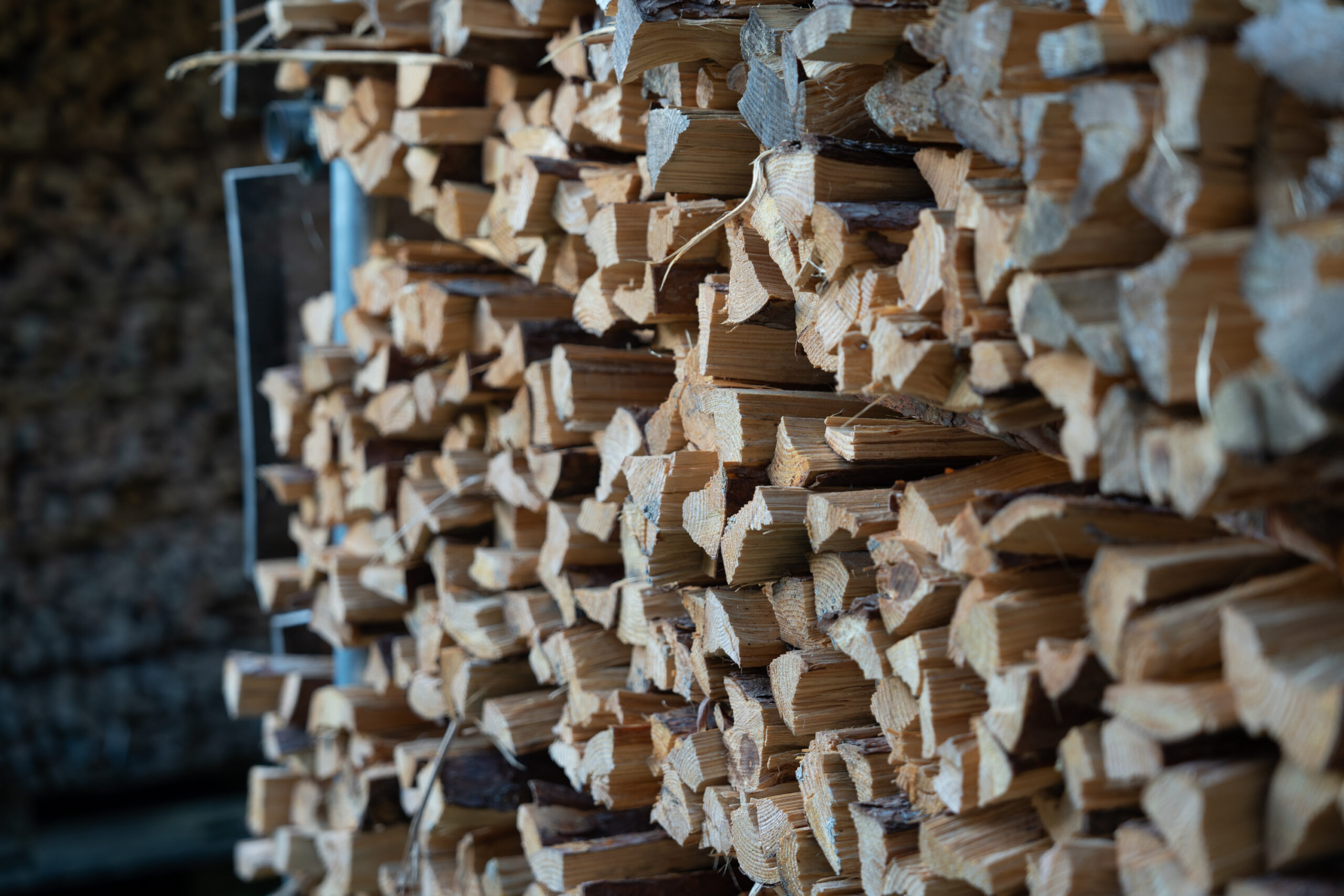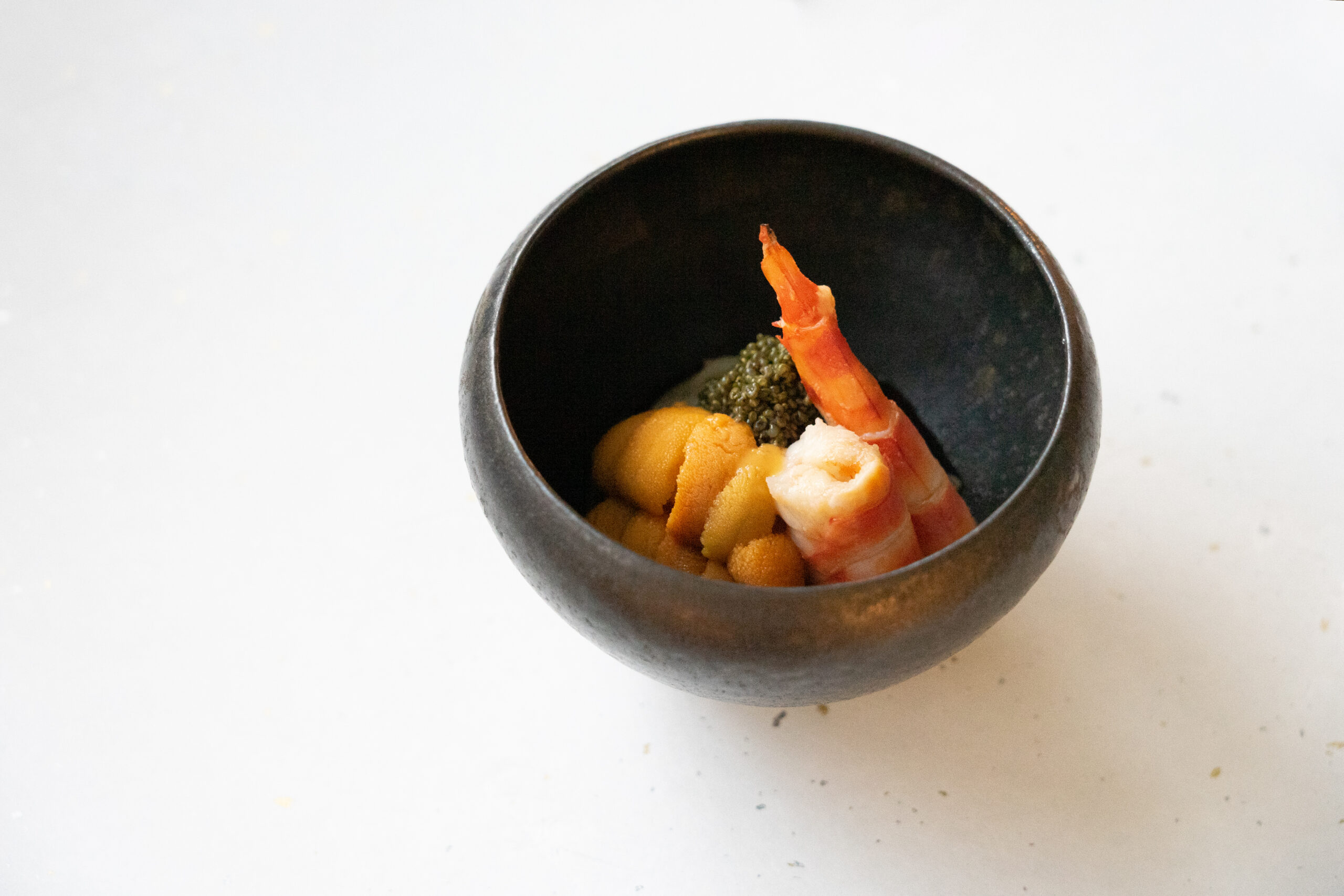Smoke rises quietly, and a line of tea bowls and sake cups drawn from the wood-fired kiln sit side by side. Each one is beautifully glazed to create a stunning impression. Picking up a piece and taking a good look at it, one feels as if one is traveling to some distant land.
In the world of ceramics, the word keshiki, which literally means “landscape,” is used to describe the exquisite and unique covering of the glaze on the clay that comes from its firing in a kiln, which sometimes produces an appearance like a real landscape. In addition to landscapes, we also sometimes see expressions that bring to mind paintings, music, or poetry; there is something about the way they make us feel, and how they inspire different people to see different images in the same piece, that makes them so appealing to viewers.
Some landscapes are beautiful, while others are dimly lit or deeply thought-provoking. The term keshiki is not used for works painted with a brush, lacquer ware, or glass works, but refers only to a unique way of enjoying ceramics brought to life with glazing.
Scenery born from flames
It is not clear why the term keshiki was coined to describe this expression of ceramics, but it is a curious word to spring to mind when one looks at a large number of pottery pieces. In the days when the chanoyu or tea ceremony was born, simple nondescript, everyday vessels were used as tea bowls. In the world of chanoyu, people must have loved the imperfections of the cracks and fissures or me-ato (unglazed spots inside the bowl, where balls of clay were used to separate bowls stacked in the kiln), seeing in them a kind of scenery.
While the appearance of scenery in nature changes along with variations in the amount of sunlight, the scenery of pottery is created by flames. Unexpected effects in the kiln are called yohen, and different landscapes can be seen not only in the flows of glaze, but also from the way the glaze is burnt and the way the ash is cast. The semi-natural beauty of this joint effort of human hands and flame is summed up in this word “scenery.”
How to enjoy the keshiki of ceramics
There are two ways to enjoy the keshiki of ceramics: placed on a table or held in one’s hand. When a piece of pottery will be viewed on a stand, it is important to pay attention to the way it is illuminated. Whether displayed under natural or electric light, while moving the work you should try to place it where you feel it is most beautiful. The most impressive part of the piece when placed is the side called the dou, or body. Artists fire their pieces with consideration to how the flames and ashes will affect the piece based on on its position in the kiln and how it is placed there. Sometimes the results are exactly as intended, and other times yohen unexpectedly appears. This is one of the mysteries of ceramics.
On the other hand, holding a piece in one’s hand and appreciating it up close is one of the unique pleasures of crafts. When you hold it, I would like you to look at the kodai, or foot, and the mikomi, the inside of the bowl. The mikomi sometimes reveals a different view when powdered green tea or sake is poured into it. The term cha-utsuri (literally, “tea-reflecting”) is used to describe the landscape that emerges when matcha tea is poured into the bowl, giving us the opportunity to enjoy the harmony and contrast between the color of the green tea and the color of the inside of the bowl. The kodai is another kind of unexplored secret or treasure trove of ceramics. Like a secret sign hidden in a masterpiece, the artist’s aesthetic sense is often quietly embedded in the kodai.
Keshiki is not something to be seen, but something to be felt
When are you moved by scenery in your daily life? Sometimes it is when you are on a trip, while other times it arises in moments in your daily life. When you go on a trip, you will see scenery that you do not usually see, and everything you see will feel beautiful. Not only natural scenery, but even cityscapes and people passing by can seem like a single landscape. This is what makes travel so exciting.
The other kind of scenery is one that lurks in our daily lives and comes to us at unexpected moments. Sometimes we chance to see a rainbow or a beautiful sunrise, and other times we encounter a view that seems to reveal our hearts in our daily lives. No matter how beautiful the scenery around us may be, if we live there every day and walk around looking down, we will never appreciate it. I love the scenery during the “blue hour,” the time when the sky turns blue at dusk, but many people walk quickly home without even noticing it. Scenery is something that exists in any place, but to perceive what you see in front of you as “scenery” requires space in one’s mind or heart. I feel like such “scenery” emerges in the mind more than the eyes, a feeling more than an image.
The same is true of keshiki in ceramics. One viewer may feel nothing at all, while another may be moved to the point where their heart resonates with it. The world of pottery held in the palm of your hand is small, but it is a treasure that you can always keep by your side. With this in mind, I hope you will take the time to enjoy each and every piece of ceramics.
Yusuke Shibata



